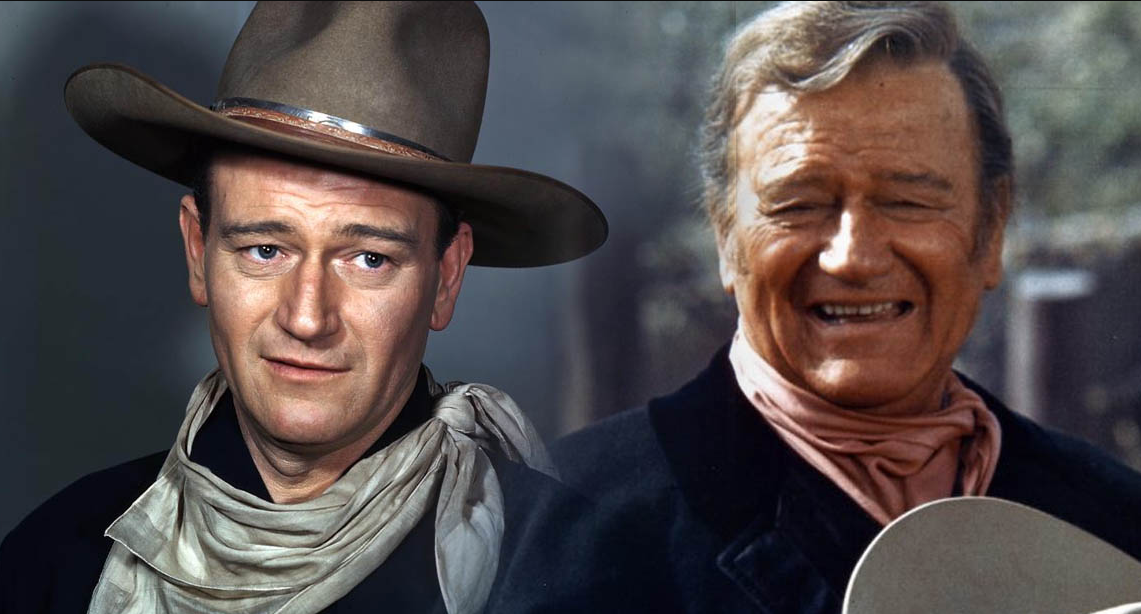John Wayne’s actual name is Marion Robert Morrison. He’s nicknamed Duke in the entertainment industry and was an American actor and filmmaker. John was one of those late actors whose career started in the 1920s silent era and pioneered the Golden Age of Hollywood. Eventually, he was the forerunner of the American New Wave of film and television. The cowboy icon has appeared in an impressive total of 179 films and television productions. This has established him among the top box office draws in three decades.
Early Life

Born on May 26, 1907, at Winterset, Iowa, John Wayne’s birth was featured in Winterset Madisonian on page 4 of May 30, 1907 edition, where it was reported he weighed 13 lbs. (around 6 kg). The actor claimed that his middle name, Robert, was changed to Michael because his parents decided to name his brother Robert, but no legal documents supported his claim.
His grandfather was an American Civil War veteran named Marion Mitchell Morrison, while his father is Clyde Leonard Morrison, a pharmacist. Meanwhile, his mother’s name was Mary “Molly” Alberta Brown, who had Scottish, English, and Irish ancestry. He was raised in Presbyterian.
John Wayne initially wanted to attend the U.S. Naval Academy, but he was not accepted. Instead, he went to the University of Southern California (USC) and majored in pre-law. John went to play on the USC football team but lost his athletic scholarship when he got injured in a bodysurfing accident. Because of this, he had no funds for schooling, thus had to leave the university.
Acting Career

The unfortunate incident of his university life was the push John Wayne needed to start his career in entertainment. He was first hired as a prop boy and extra as a recommendation by silent western film star Tom Mix to his director John Ford. Later on, he moved to support roles in a movie when he established a longtime friendship with Ford.
Moreover, the first time he was given on-screen credit as “Duke Morrison” happened in the 1929 film Words and Music under Fox Film Corporation. His first big break was in The Big Trail in 1930 when the director Raoul Walsh saw him moving furniture in the studio as a prop boy and cast him as a starring role. He did well on that project, and so, the Fox Studios chief Winfield Sheehan discussed his screen name. The actor suggested “Anthony Wayne,” but Sheehan rejected the idea because it sounded “too Italian.” The second suggestion was “John Wayne,” which was approved, and then his pay was raised to $105 a week.
Thanks to the Stagecoach film in 1939, John Wayne became a household name. The film, directed by John Ford, shot John in mainstream stardom. Even with the breaking out of World War II, John’s career soared, and he won several awards in the 1970 Academy Awards as Best Actor. 1953, 1966, and 1970 Golden Globe Awards gave him Henrietta Award, Cecil B. DeMille Award, and Best Actor for Motion Picture Drama, among other notable accolades.
Marriages And Personal Life

The actor was married three times and divorced twice. His first wife was Josephine Alicia Saenz, his second wife was Esperanza Baur, and his third wife, Pilar Pallete. He had seven children, four from Josephine and three from Pilar. According to reports, his first child Michael Wayne didn’t take his divorcing and new wives lightly because their relationship became harsh at some point. Several of John Wayne’s children worked in film and television. His children also contributed a lot to the productions.
Moreover, the biographer of John Wayne, Michael Munn, chronicled the actor’s drinking habits. This has affected his performance, and some shooting schedules were aligned to it. Sam O’Steen’s Cut to the Chase memoir wrote how the studio directors knew to shoot John’s scene before noon comes as he’s practically a mean drunk by the afternoon. Besides drinking problems, he had been a chain smoker of cigarettes since he’s a young adult and was diagnosed with lung cancer in 1964. Furthermore, he underwent successful surgery to remove his entire left lung and four ribs. Five years later, he was declared cancer-free.
Death

John Wayne was declared cancer-free, but then he still died of stomach cancer on June 11, 1979. His remains were buried in the Pacific View Memorial Park found in Newport Beach. According to Patrick Wayne and his priest grandson Matthew Munoz, Wayne converted to Roman Catholicism before he died.
Strangely, many cast and crew from the film The Conqueror in 1956 developed different forms of cancer at various times, including the stars like John Wayne, Agnes Moorehead, Susan Hayward, Pedro Armendariz, and director Dick Powell. It was shot in southwest Utah, to the east and downwind of recent US government nuclear weapons tests in southeastern Nevada.
John Wayne is an American actor who may have the ups and downs in life, but he’s still a Cowboy icon of Western films, no doubt.


 Entertainment10 months ago
Entertainment10 months ago
 Entertainment10 months ago
Entertainment10 months ago
 Entertainment11 months ago
Entertainment11 months ago
 Entertainment1 year ago
Entertainment1 year ago
 Entertainment10 months ago
Entertainment10 months ago
 Entertainment11 months ago
Entertainment11 months ago
 Entertainment11 months ago
Entertainment11 months ago
 Entertainment10 months ago
Entertainment10 months ago












